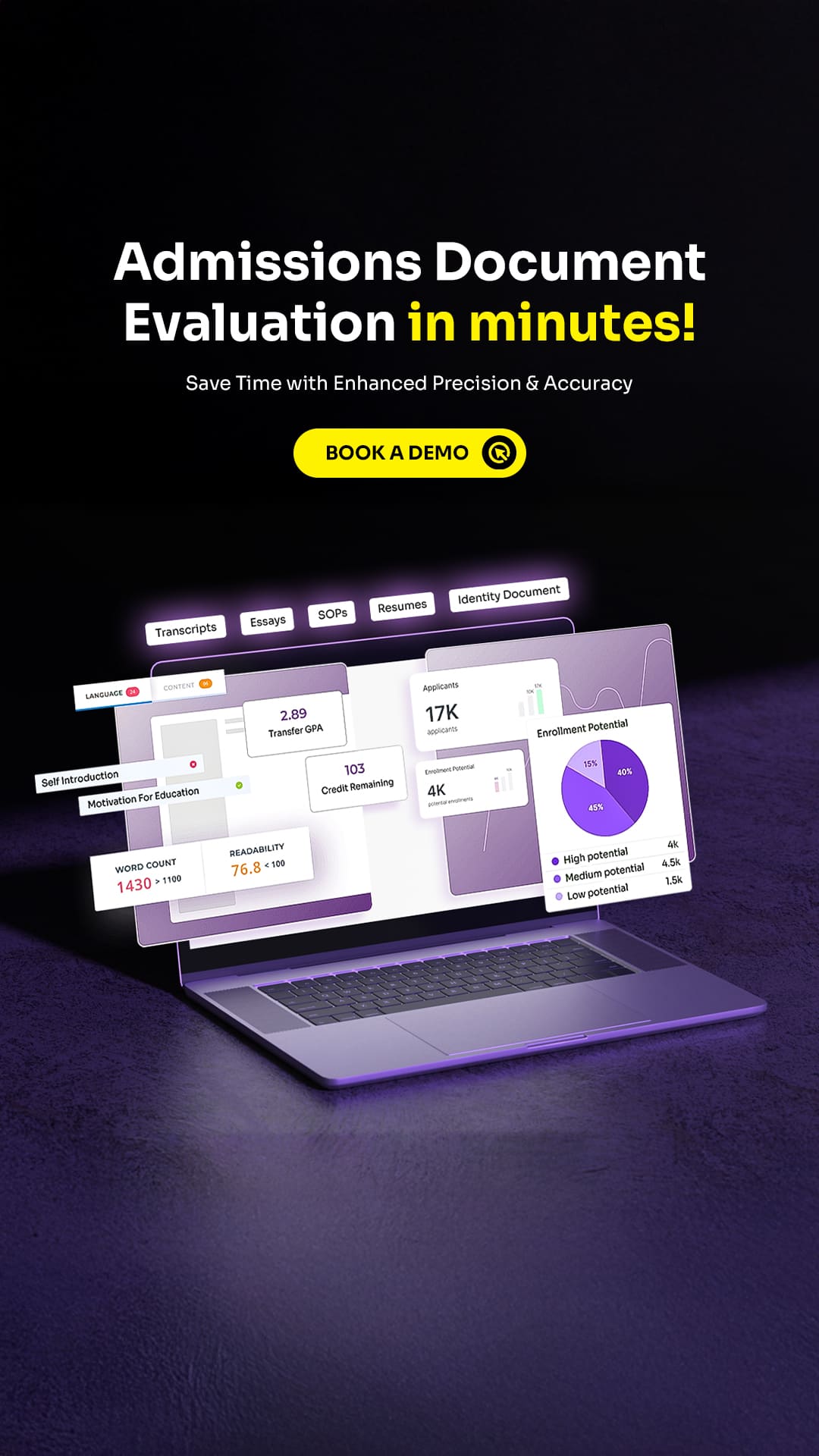Summer melt refers to the drop in student enrollment by the end of the summer before fall classes start. It happens due to several factors like missing deadlines for verification forms, financial aid, and so on. Summer melts are a common concern for educational authorities; however, research has revealed methods that can considerably reduce summer melts while enhancing college enrollment rates.
Table Of Contents
According to a study conducted by Harvard University, between 10 and 40 percent of students who intend to attend college do not follow through by the fall after high school graduation. This issue, known as summer melt, is particularly prevalent among students from certain backgrounds, with broader social challenges contributing to this outcome.
Educational institutions can take several steps to reduce summer melt. These include strategies such as hiring counselors, spreading registration throughout the summer, and utilizing AI tools like chatbots and assistants to support students through the process. By implementing these solutions, schools and universities can help more students successfully transition to college and reduce the impact of summer melt.
What is summer melt?
As described by the Harvard University Center for Education Policy Research, summer melt is “when presumably college-intent students fail to enroll at all in the autumn after high school graduation.” Students who are ‘college-intending’ have accomplished essential college-going procedures such as applying to and being admitted to college, as well as seeking financial assistance if their family qualifies.
Research indicates that around 10 to 40 percent of high school graduates who initially plan to attend college end up not enrolling. This issue is especially prevalent among low-income students and those planning to attend community colleges, with attrition rates for these groups reaching up to 40%.
Reasons behind summer melt
The move from high school to college may be highly stressful, and many students are unprepared for the procedures that follow receiving a college admission letter. The timing of college acceptance exacerbates this: many of the processes students must take to assure admission and arrival on campus occur during the summer when they have no access to school counselors or other educational resources.
According to a Harvard research titled The Forgotten Summer, published by Benjamin L Castleman and Lindsay C. Page, student problems may be boiled down to three significant issues:
- Cost: Locating additional sources of help, asking for further assistance from the institution, and obtaining loans.
- Social Anxiety: Fear of leaving home, establishing new acquaintances, and confronting new situations.
- Informational Barriers: Difficulties comprehending college registration forms, housing alternatives and requirements, and orientation sessions.
Apart from these, there are several other reasons behind summer melt-
- During the summer, there is no access to high school guidance counselors.
- Certain forms are difficult to complete, such as the FAFSA.
- Parents’ lack of awareness, particularly for first-generation college students.
- Missing emails or letters with critical information and deadlines.
- There is a lack of support from family and friends.
- Students face difficulty in getting critical papers, such as health and tax records.
- Over the summer, students can communicate with the college only a few times.
Students suffering from summer melt intend to attend college the following autumn, but a lack of understanding of the procedures they must take and how to accomplish them right jeopardizes their ability to arrive on campus on the first day. They typically lack support and are confused about where to turn for help, particularly after high school graduation.
img-alt;a-boy-taking-admission-in-a-college;Students are considerably more likely to complete and return paperwork on time when they have to focus on a handful at a time.
Strategies to reduce summer melt
1. Spread registration throughout the summer
The paperwork that must be completed before a student begins their first semester of college can be pretty daunting. Spread out registration throughout the summer to reduce stress. Instead of mailing many forms all at once, try spreading them out throughout the summer months.
This will not only reduce stress but will also increase student engagement by boosting touchpoints over the summer. Students are considerably more likely to complete and return paperwork on time when they have to focus on a handful at a time.
2. Provide a mentor or counselor right away
A lack of access to a solid support structure is one primary reason so many high school graduates do not attend their preferred college. Many high schools lack summer programming to help students transition to college, resulting in a significant gap in understanding the next steps they should take and what they should expect.
Establishing a program that provides potential students with counseling, financial aid advice, transcript assistance, and psychological support may help mitigate the impact of summer melt. Providing a mentor or counselor to kids immediately after high school graduation who checks in during the summer might significantly influence the student’s probability of attending college.
3. Make forms simple and easy to complete.
Forms that are confusing to fill out may discourage kids from enrolling in college. They may miss deadlines and get off track if they are hampered by a complex fillable PDF or do not have access to print paper forms.
Provide students with mobile-friendly web forms they can complete in minutes on any device. To ease the form procedure, look for a form solution that allows students to submit documents and submit their electronic signatures. The easier institutions make it, the higher their conversion rates will be, and the more students will show up on their first day.
4. Use AI assistants to give more personalized service to students.
Universities are not only experiencing enrollment decreases, but they are also struggling with high dropout rates. Learning must be more exciting and individualized for today’s college students. Technology, particularly artificial intelligence (AI), can help with these difficulties.
AI can provide a tailored learning experience when fed and educated by Big Data, claims AI specialist Lasse Rouhiainen in the Harvard Business Review. According to Rouhiainen, professors may acquire unique insights into how various students learn and take advice on adjusting their teaching approaches to their specific requirements.
An AI-powered computer may be able to read the emotions on students’ faces to determine whether they are having difficulty absorbing teachings. IBM Research and Rensselaer Polytechnic Institute have collaborated on a novel technique for teaching Mandarin to pupils.
They combine an AI-powered assistant with an immersive classroom setting that transports students to a Chinese restaurant, a park, or a tai chi class where they may practice speaking Mandarin with an AI chat agent.
5. Use AI chatbots to freeze summer melt.
The emergence of data-fed virtual teaching assistants and intelligent enrollment counselor chatbots has sparked excitement in the higher education community about the prospects of utilizing artificial intelligence on campus in recent years. Colleges and universities expect AI can help them unload time-consuming administrative and academic chores, improve IT procedures, increase enrolment in a declining climate, and provide a better learning experience for students.
These enhancements are already taking place on several campuses. Higher education institutions can develop a virtual “campus coach” who symbolizes a school’s community’s aggregate wisdom and distinct character. It combines interactive artificial intelligence (AI) with human knowledge to help students navigate college.
The chatbot can answer a range of queries, including:
- When is the deadline for my tuition?
- How can I transmit my ACT results?
- Which parent should I use on the FAFSA?
- Is it okay if I carry my salamander to the Piedmont dorm?
6. Use the nudge texting method.
The nudge texting method has proven to be an effective tool for boosting college enrollment rates. By sending personalized and actionable text messages, this strategy encourages students to complete essential tasks and stay on track for college enrollment. Combining behavioral insights with data, nudge-text technology targets students at key moments in the lead-up to their college journey. This method has been especially impactful for reaching students who may be at risk of summer melt, ensuring they stay engaged and complete necessary steps toward enrollment.
7. Use every tool you have to stay connected.
Generation Z is more immersed in technology than any previous generation; therefore, schools must reach where they are to meet enrollment targets. Institutions must make their forms, information, and contact information mobile-friendly, from scholarship applications to resident hall admissions.
Students are glued to their phones, but not always to their email. Institutions can investigate ways to make their data collection more mobile-friendly and additional ways to use mobile communication, such as SMS messaging. Communication with your students may last until the conclusion of their senior year.
One strategy is to produce a newsletter for them and their families. It’s a great approach to keep them informed about matriculation deadlines and advice. Summer workshops for students and parents are another option, ranging from avoiding errors on the Federal Application for Free Student Aid to the importance of attending college orientation.
8. Use AI-powered tools to predict the number of students vulnerable to summer melt and other risks.
Students nowadays are juggling more responsibilities than ever before. With a full course load, extracurricular activities, social engagements, and frequently several minimum-wage jobs, it’s no surprise that many students drop out before finishing their degree.
With the overall six-year graduation rate for kids studying in the United States hovering around 60%, it’s evident that schools must invest in mechanisms to aid their at-risk pupils better. AI can provide that assistance through predictive analytics that can serve as early warning systems for students in danger of failing classes, skipping payments, or battling mental health difficulties. AI may summarize a student’s behavior by assessing numerous data points such as academic status, peer and professor comments, and on-campus activities.
Instead of just on grades to determine well-being, this allows for a more comprehensive assessment of the student’s total “health.” In addition to being more timely, AI software may alert students when they encounter particular triggers or fall into defined risk patterns, offering real-time evaluations rather than the typical mid and post-semester reviews.
Conclusion
Educational institutions should keep their prospective students interested from the minute they receive their admission letter, and by this, they will avoid summer melt. Students’ capacity to overcome difficulties to get on-campus rises tenfold when they have a support network, open communication, and assistance.
Thus, institutions should make sensible adjustments that assist more students in achieving their college dreams by integrating technology, new programming, and planning.
Also Read: How can technology help in higher education marketing?
How to Increase Student Enrollment in Private Schools?
How to recruit prospective students using Omnichannel Marketing?









No comments yet. Be the first to comment!
Leave a Comment